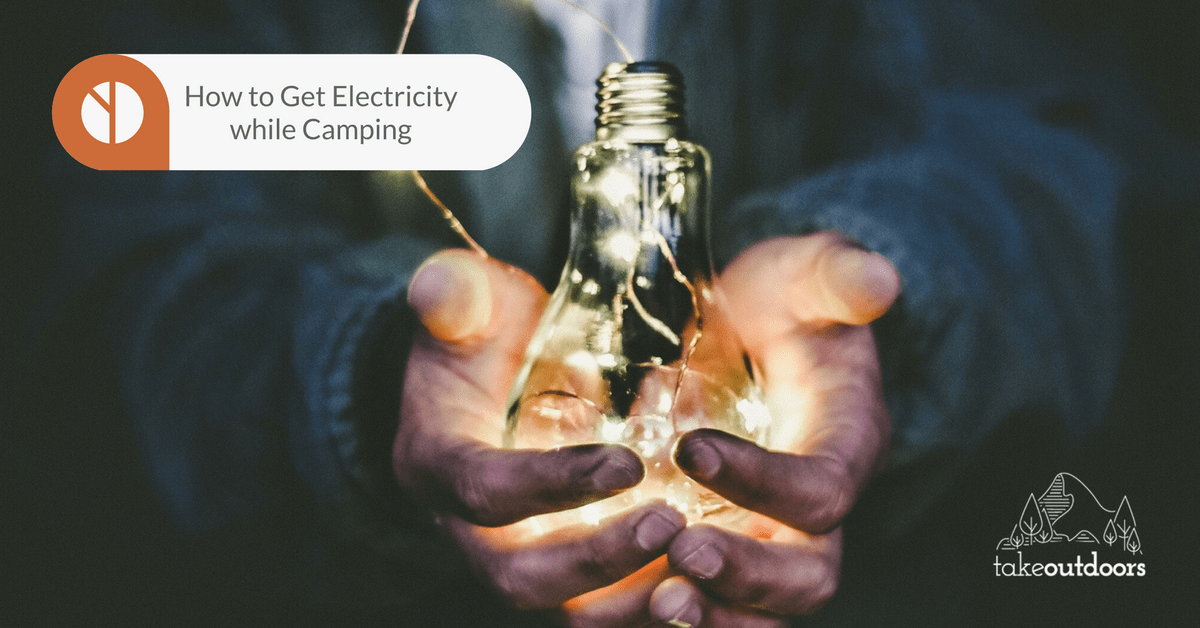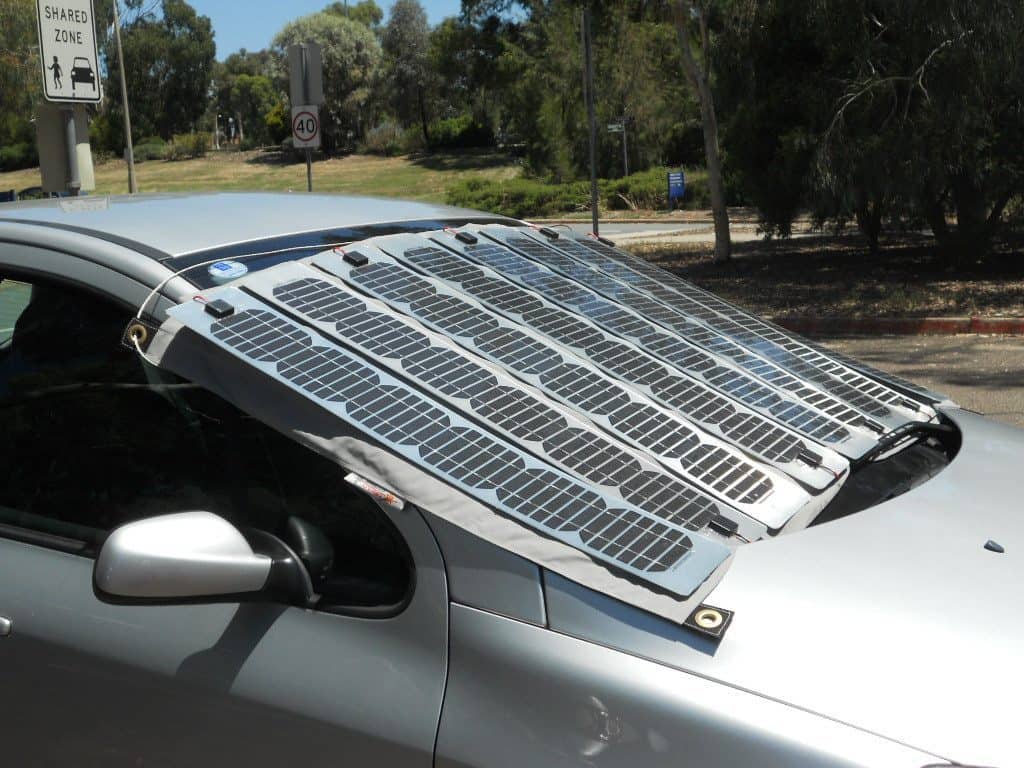We use affiliate links and may receive a small commission on purchases.
Read more about us.
Update: We found one more method you can get your electricity from. Read on further!
Camping is an inspiring way to enjoy the woods, mountains and beaches of our country. It fulfills the need for being outdoors that all human beings have, and communing with nature can be a transformative experience.
You can still enjoy the modern comforts of home on a camping trip, though, and it doesn’t take anything away from the adventure. The only hitch is figuring out how to get electricity while camping.
Your phone, camera and laptop all have batteries that will need to be recharged if you’re going to stay away from civilization for several days.
Lights will also be needed if you plan to stay up past dark each night, and especially if you decide to read or play games with your fellow campers.
For your convenience, we’ve listed several ways to obtain electricity to power your gadgets and equipment the next time you go camping.
Safety First
Whatever power source you use, be cautious about using electricity while camping. It’s perfectly safe as long as you follow basic precautions. It can be risky to use electricity inside a damp tent unless it’s properly shielded and connected. If you’re hooking up to campsite-supplied electricity, you’ll need a special, heavy-duty waterproof connector line that includes damp-proof sockets for plugging in your equipment.
| Type | Description | Product | Remarks |
|---|---|---|---|
| Gas Generator | Runs on fuel | DuroStar DS4000S | Bulkier and heavier compared to other types of generators. Many campsites have banned usage of gas generators because of fumes that they emit. |
| Thermoelectric Generator (TEG) | Runs on heat | BioLite Wood Burning CampStove | These cookstoves have built in TEG to generate electricity and cook your food at the same time. However, the electricity generated is just enough to power small appliances. |
| Pedal Generator | Runs on your calories | K-Tor Power Box 50 | Usually used for an emergency but if you think you lack enough exercise you can consider this. |
| Car Battery | Take out from your car | BESTEK Power Inverter DC to AC Car Inverter with Dual USB Car Adapter | Probably need a power inverter so it doesn’t fry your electronics. Take note not to use it for long because you might not have enough charge to start your car |
| Compact Portable Battery Packs | Easily available | Goal Zero Sherpa 100 Power Bank | There is a wide range of battery packs that come different capacities. Some are big enough to charge your laptop. |
| Solar Power | Runs on solar energy | Anker 21W Dual USB Solar Charger | Clean energy. However, a solar generator is highly dependent on the presence of the sun. Not a good choice if you are camping in a cave. |
| Wind/Water Turbine | Runs on kinetic energy | Waterlily Turbine Charger | Works any time of the day as long as you are near a river or a windy place. |
Gas Generator
The first thing that often comes to mind for supplying electricity off the grid is a gas-powered generator. While this is an easy way to provide power, it’s also very noisy.
Also, most gas generators emit fumes while running, and this negates the benefit of getting away to the fresh air of the outdoors.
Many campsites have banned gas generators for these reasons. We recommend using alternative means for electricity unless you’re going to be wilderness camping with no one else around. A gasoline generator is also an expensive option at several hundred dollars and up.
Thermoelectric Generator (TEG)

This type of generator is less efficient and more expensive than a gasoline-powered generator, but it’s superior in every other way. Using a TEG is a way to convert temperature differences into electricity.
In a camping situation, the generator harvests some of the energy created from the temperature difference between two points.
The beauty of this option is that you can use a TEG even in a wilderness situation by building a fire and using the banked coals for the heat source. The down side to choosing a thermoelectric generator is that they cost slightly more than gasoline generators.
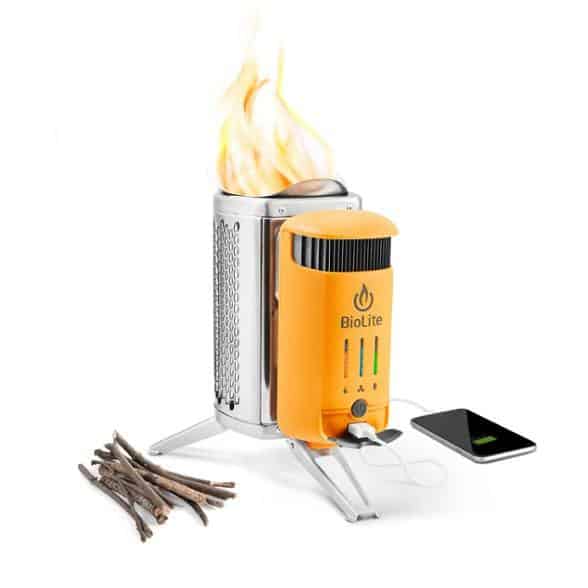
A TEG cook stove such as BioLite Wood Burning CampStove can generate enough electricity to power small appliances. You create heat by burning wood in the stove, and the heat differential creates a 5 to 12-watt output for charging cell phones, tablets and LED lights.
Some models can even produce up to 15 watts of energy, and a TEG can store power for later with a battery attachment. Not to mention that the cook stove version prepares your dinner at the same time!
Pedal Generator
A pedal generator is another type of electricity source, and this one is people-powered. A simple one will use regular bike pedals and it’s small and lightweight enough to carry with you on a camping trip. Not only will it charge electronics and small appliances, but it will recharge batteries for a flashlight or even a 12-volt car battery.
A pedal generator won’t store energy from pedaling like other power generators, so be aware that you’ll always have to pedal to get electricity while camping. Also, the portable type needs to be bolted to a base in order to comfortably pedal for a long period of time.
Users have reported that the pedal generator works well and that it will charge two items at one time, such as a cell phone and a tablet computer. It’s also less expensive than the other generators, since portable pedal generators can be purchased for a couple hundred dollars.
12-Volt Car Battery/12-Volt Portable Battery
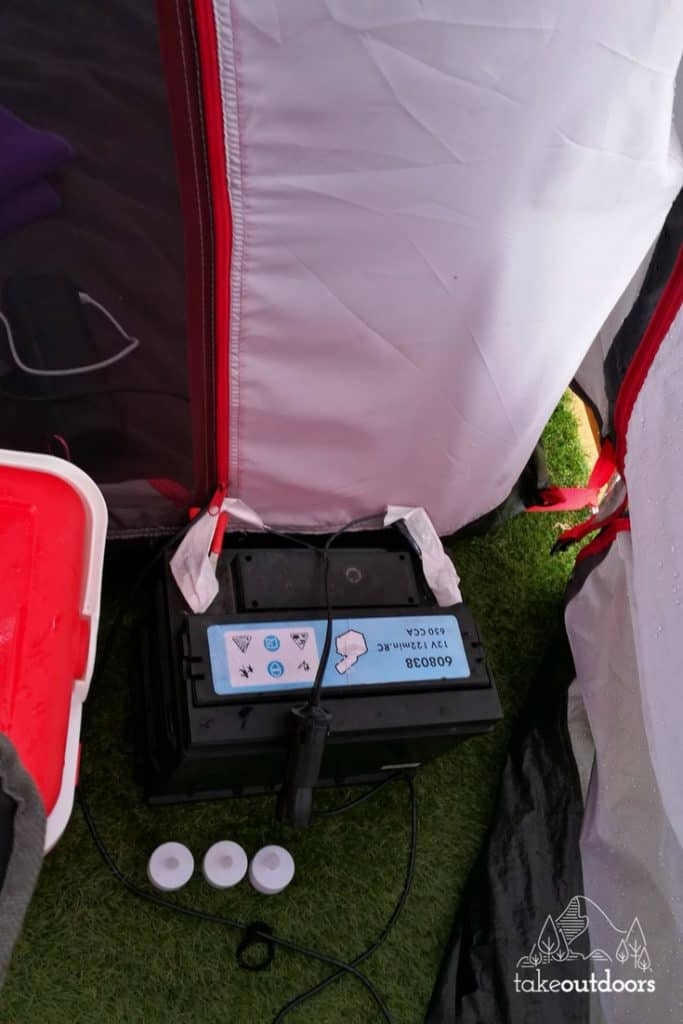
One option for accessing electricity while camping is to plug in to the cigarette lighter outlet and use the car battery. This will work for charging cell phones and one or two small appliances, but you can’t use it for long or it will lower the battery charge too much for the car to start.


If you decide to go this route, you’ll need a power inverter such as the BESTEK 300W Power Inverter DC 12V to 110V AC Car Inverter with 4.2A Dual USB Car Adapter to plug into the 12-volt outlet. This will give you regular power outlets and USB ports.
If you want to use a 12-volt battery like the one your car has for your electricity needs, it’s easiest to buy a portable 12-volt power source. These come with their own converters and outlets, and they often have panels that indicate how much charge is left. Some 12-volt power packs can also be used to jump-start your car’s battery. These cost about the same as pedal generators.
This might not be a good option for you if you are always on the go. Well… unless you don’t mind carrying an additional ~30 lbs on your back.
Compact Portable Battery Packs
This is a modern solution for having electricity at your camp site. Rather than lug a heavy battery backup or use your car for power, you can fit one of these portable battery packs in a laptop bag. If you want to know how to get electricity while camping just so you can charge a few small electronics, look no further.
The lithium ion batteries in a portable charger can keep phones, cameras, and tablets running for days. Both the basic models and the more powerful compact portable batteries should include USB ports and standard 120-volt electrical outlets for charging. The power output is measured in amp hours (Ah), and 27 Ah will be enough to keep minor electronics charged for a few days.
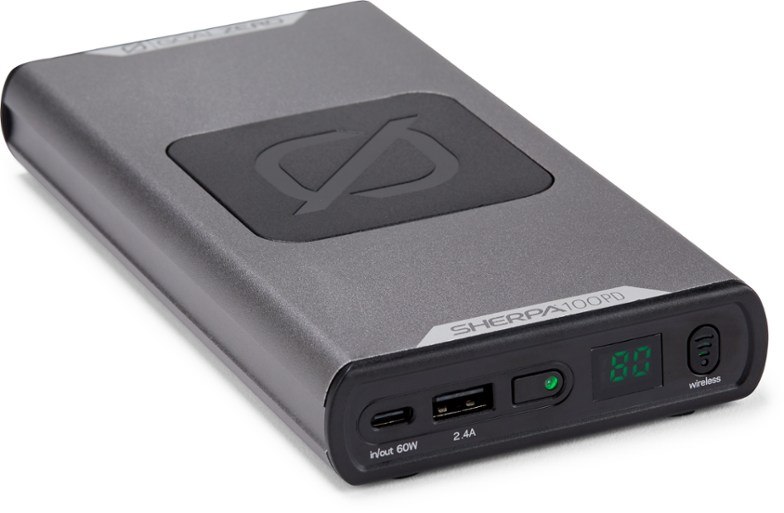
Portable packs like the Goal Zero Sherpa 100 Power Bank weighing less than 2lbs are compact yet provide enough juice to charge your phones and tablets for days. There are even 100 Ah capacity solar-powered generators that are larger versions of the portable battery pack. If you are car camping, maybe you can consider the chunky solar-powered generators. But for now, a smaller portable power pack should do.
Solar Power
Solar power is a win-win solution for the question of how to get electricity while camping. It’s clean, quiet energy and, once you’ve purchased a solar setup, it’s free. Portable solar panels can be set up in the sunniest area of your camp to take the best advantage of the available sunlight.
Of course, you have to rely on sunny days for electricity, and that’s why you need battery storage as part of your solar electricity camping kit.
Most solar power camping setups include a portable battery pack. For outdoors, you’ll want a kit that’s rugged, waterproof and lightweight. When the sun decides to play peek-a-boo, your battery pack should have an attachment allowing it to be recharged from your vehicle as well. You’ll need an inverter so that the power pack can be safely charged without damaging your vehicle’s battery. Charging without one is a safety hazard and can destroy the battery.
Benefits of solar kits include easy setup and little effort to keep going. They also need little or no maintenance. Solar power does require a steep investment to begin with.
But if you’re just going to charge your phone or tablet, a portable low wattage solar charger such as Anker 21W Dual USB Solar Charger should be sufficient
Wind or Water Turbine
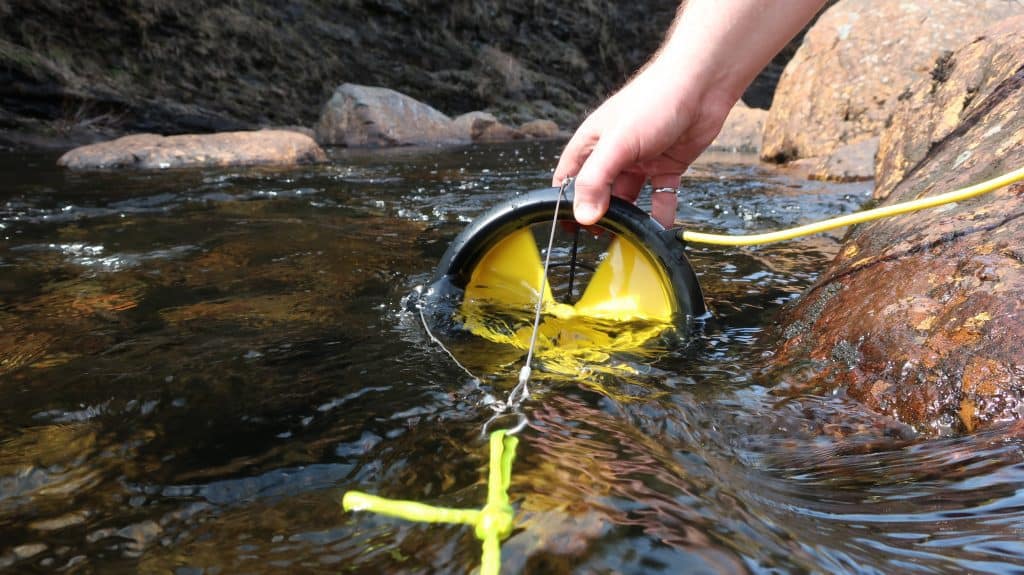
The issue we face when using Solar Power chargers is they don’t work at night or even the day in a place where sunlight is blocked. If you are in a dense forest or it’s a cloudy day then you’re not getting the best of your charger.
Recently, we saw this genius invention by WaterLily. This turbine generates electricity from wind or water. Its maximum power output is at 15W and it provides two 5V USB ports to charge your phones, tablets, GPS or cameras.
As with solar power, this is free too! And if you are not near any river, that’s fine too since you can hang this on a tree and let it collect wind instead. You will have energy 24/7 of the day.
Recreation Vehicle (RV) Battery Bank
RVs have a 12-volt battery separate from the car battery. RV “house batteries” are typically 30 or 50 Ah systems that power the basic functions of the camper such as lights, vent fans and the water pump.
This battery is strong enough to power small electronics but not the microwave, refrigerator or air conditioner in a typical camper. It can be recharged with an electrical hookup at a campground and by the sun if you have solar panels. The house battery is automatically charged whenever the motor home is plugged into a power source or when it’s running.
For several days of stationary camping, though, this isn’t enough electricity. If your RV has solar panels and/or a deep cycle marine battery, the basic functions of the RV will continue to operate for a few days. But if you want to use air conditioning and energy draining appliances, you’ll need more power.
The solution is to include a battery bank in your RV that can be charged at a campsite or with solar panels. The battery bank is a connected set of 12-volt batteries that are evenly spaced in your camper to keep the weight distributed properly.
Most modern motor homes also have a built-in gas generator that runs using the fuel in the gas tank. Some of them switch over automatically when electricity demand is high, and others have to be manually set to the generator mode. This can be a valuable asset, even in a campground where electricity is provided. If too many campers are draining the electrical grid, there may be a deficit in voltage for operating some of your appliances. Operating them with insufficient power can permanently damage them.
Tips to Make the Most of Your Power Source
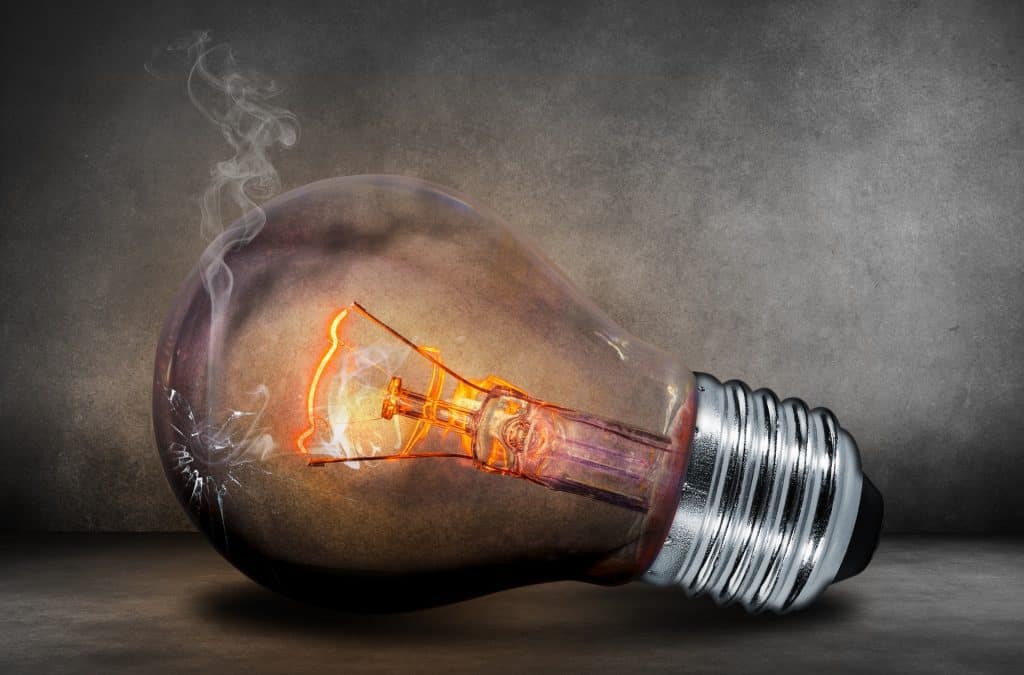

- Use battery powered appliances. Some small electronics like alarm clocks and small fans will run for months on the same batteries. The more you can alleviate the load on your electric consumption, the longer you’ll be able to camp off the grid.
- Use energy-efficient appliances. Newer appliances are rated for less energy consumption. Make sure your small and large appliances are up to date with the latest energy-saving features.
- Use dual solar electricity sources for an RV. If you’re going to use solar panels (and we highly recommend it), use both the roof-mounted and portable types. If your camping spot is too shaded for the roof panels to be effective, you can set up the portable ones in the brightest available sun.
Plenty of Options
As you can see, there are many ways to generate electricity for your camping adventures. Price, available space and ease of use are some factors to consider when deciding which option is best for your family. Some options, such as solar panels and TEG generators, cost a lot up front but end up having solid value because of the free energy they produce. The common denominator is that battery storage is a vital component of whichever setup you choose.

